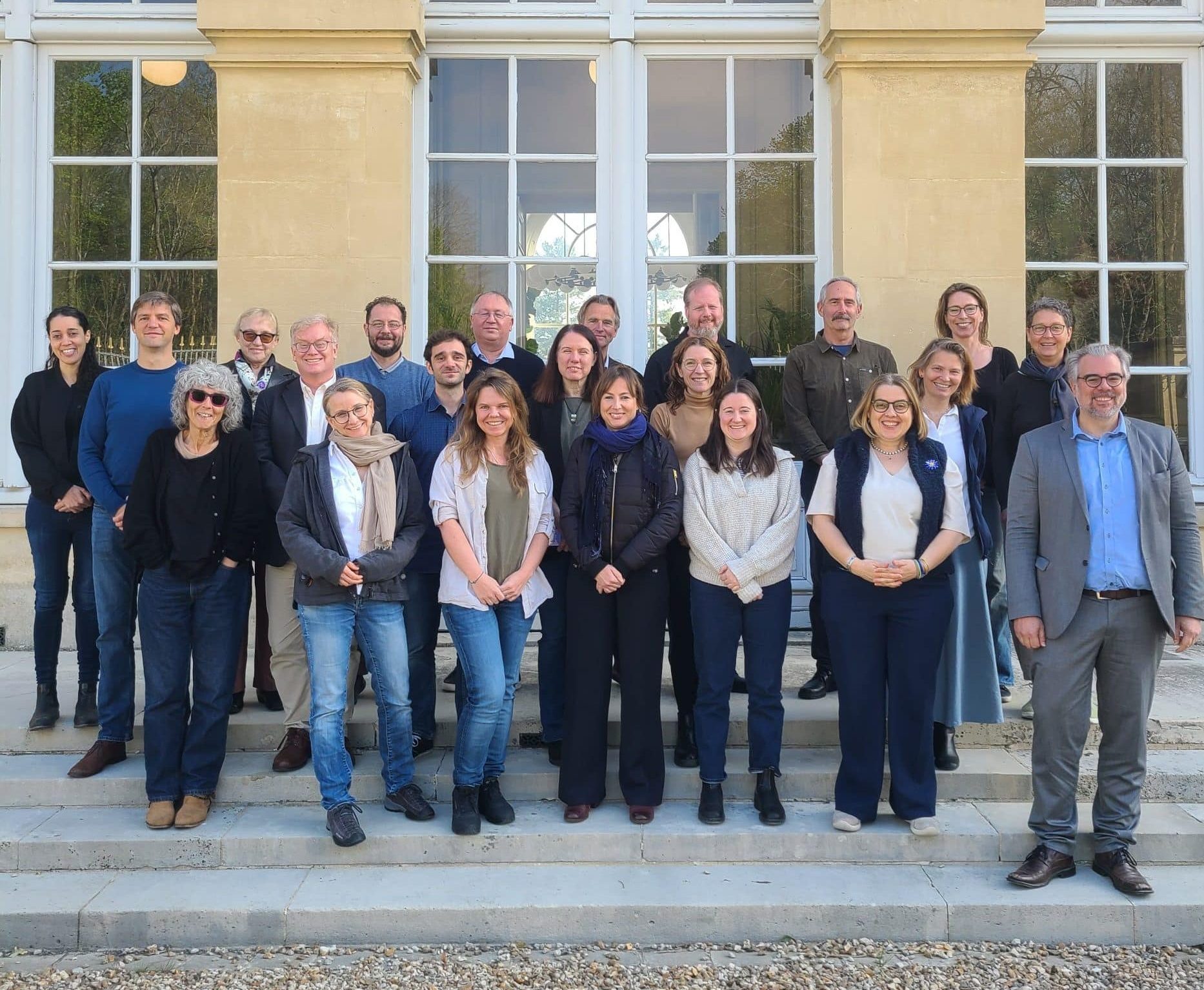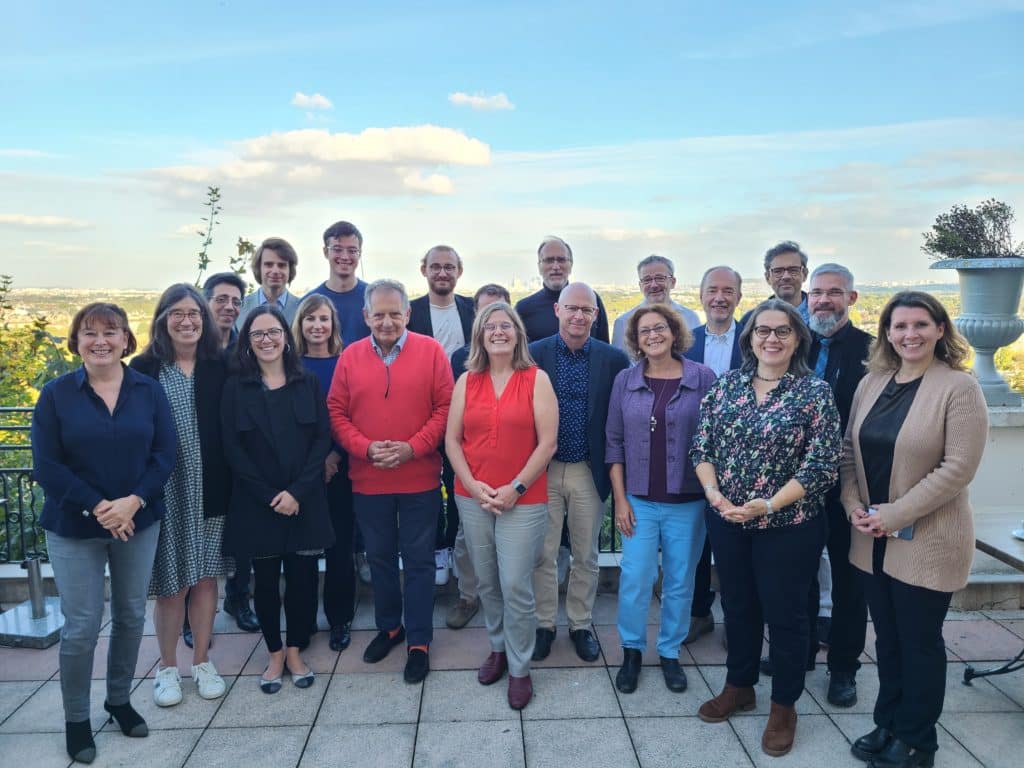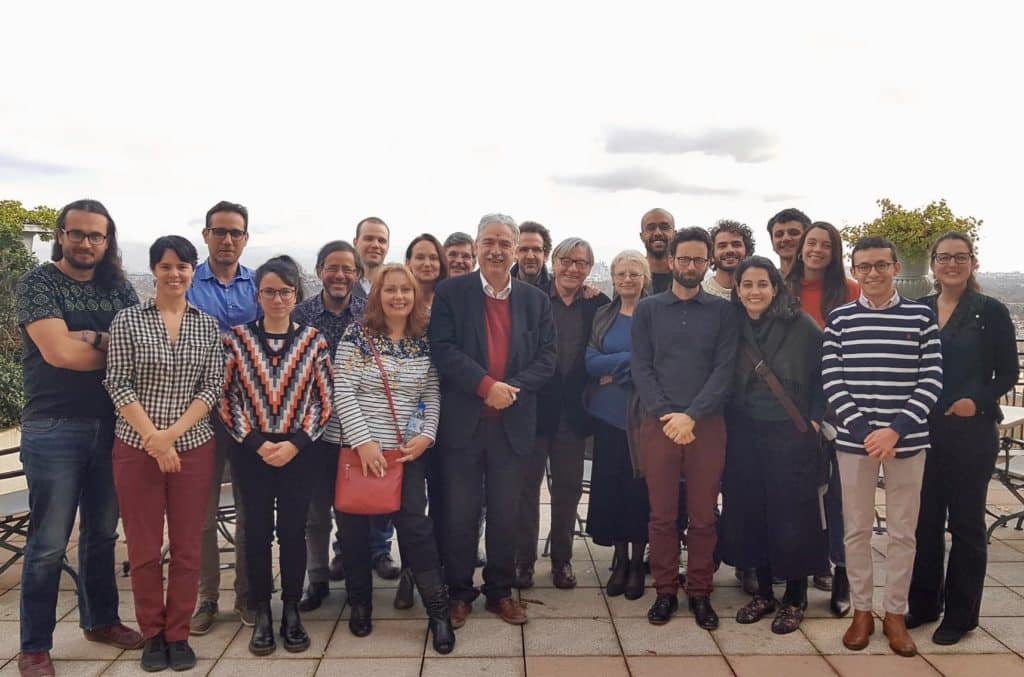- James ANDERSON, Université Louis Pasteur, France
- Kim BARD (contributor), Yerkes National Primate Research Center of Emory University, USA
- Arlette Berthelet (co-editor), Laboratoire de Recherche sur l’Afrique Orientale, UPR 311-CNRS France
- Sylvie BEYRIES (contributor), Centre de Recherches Archéologiques, ERA 28-CNRS, France
- Pierre BODU, Laboratoire d’Ethnologie Prhéistorique, UA 275-CNRS, France
- Christophe BOESCH (contributor), Universität Zurich-Irchel, Switzerland
- Bernadette BRESARD (contributor), Laboratoire d’Ethologie, MNHN, France
- Jean-Pierre CHANGEUX, Laboratoire de Neurobiologie Moléculaire, Institut Pasteur, France
- Jean CHAVAILLON (chairman and co-editor)Laboratoire de Recherche sur l’Afrique Orientale, UPR 311-CNRS, France
- Maurice GODELIER, EHESS, France
- Jack HARRIS (contributor), Rutgers university, USA
- Robert A. HINDE, Cambridge University, UK
- Michel IMBERT, Laboratoire des neurosciences de la Vision, Université Pierre et Marie Curie, France
- Tim INGOLD (contributor), University of Manchester, UK
- Marc JEANNEROD, Laboratoire de Neuropsychologie Expérimentale, France
- Françoise JOUFFROY (contributor), MNHN, France
- Frédéric JOULIAN, France
- Michelle JULIEN, Préhistoire des Andes, UPR 313-CNRS, France
- Claudine KARLIN (contributor), Laboratoire d’Ethnologie Préhistorique, UA275-CNRS, France
- Jean KITAHARA-FRISCH (contributor), Sophia University, Japan
- J.D. LAJOUX, CNRS, France
- Bruno LATOUR, Ecole Nationale Supérieure des Mines, France
- Roger LEMON (contributor), University of Cambridge, UK
- Pierre LEMONNIER, CNRS, France
- William McGREW (contributor), University of Stirling, UK
- Jacques PAILLARD (contributor), CNRS, France
- Jacques PELEGRIN (contributor), CRA-CNRS, France
- Catherine PERLES (contributor), CRA-CNRS, France
- Jacques PERRIAULT (contributor), Ministère de l’Education Nationale, France
- Pierre PETREQUIN (contributor), CNRS, France
- Nicole PIGEOT, CNRS, France
Marcello PIPERNO (contributor), Museo Nazionale Preistorico Etnografico Luigi Pigorini, Italy - Sylvie PLOUX, CRA-CNRS, France
- Pierre RABISCHONG (contributor), INSERM, France
- Jean SAUBE, France
- Pascal SELLIER, CNRS, Université de Bordeaux, France
- François SIGAUT (contributor), EHESS, France
- Yukimaru SUGIYAMA (contributor), Kyoto University, Japan
- Boris VALENTIN, CNRS, France
- Jacques VAUCLAIR, CNRS, France
- Isabelle VILLEMEUR, CNRS, Université de BORDEAUX, France
- Elisabetta VISALBERGHI (contributor), Istituto di Psicologia-CNR, Italie
Ouvrage :
The Use of Tools by Human and Non-human Primates
A. Berthelet and J. Chavaillon
Abstract
This volume brings together contributions on the theme of tools from international specialists in various disciplines — anatomists, neurobiologists, prehistorians, ethnologists, and primatologists — at a symposium arranged by the Fyssen Foundation. Tools, whether of stone, wood, or metal, are a prolongation of the arm, but they acquire precision through the hand directed by the brain. A movement may have been identical from one another, in apes and in humans, in the past and in the present, but the resulting action varies according to the extended use of the tool. It is therefore necessary to understand the origin of tools, and also to be able to describe the techniques of cutting tools, and to imagine the possible uses of certain tools. Comparison of the techniques of chimpanzees with those of prehistoric Man and of twentieth-century Man has made it possible to appreciate the common aspects and to identify the differences. The transmission of ability, and of the understanding also called apprenticeship, has been studied in the various relevant societies: chimpanzees in their natural habitat and in captivity, hunter-gatherers, and workmen in prehistoric and in modern times.
Keywords: anatomists, neurobiologists, prehistorians, ethnologists, primatologists, tool techniques, chimpanzees, ability transmission, prehistoric workmen, modern workmen


